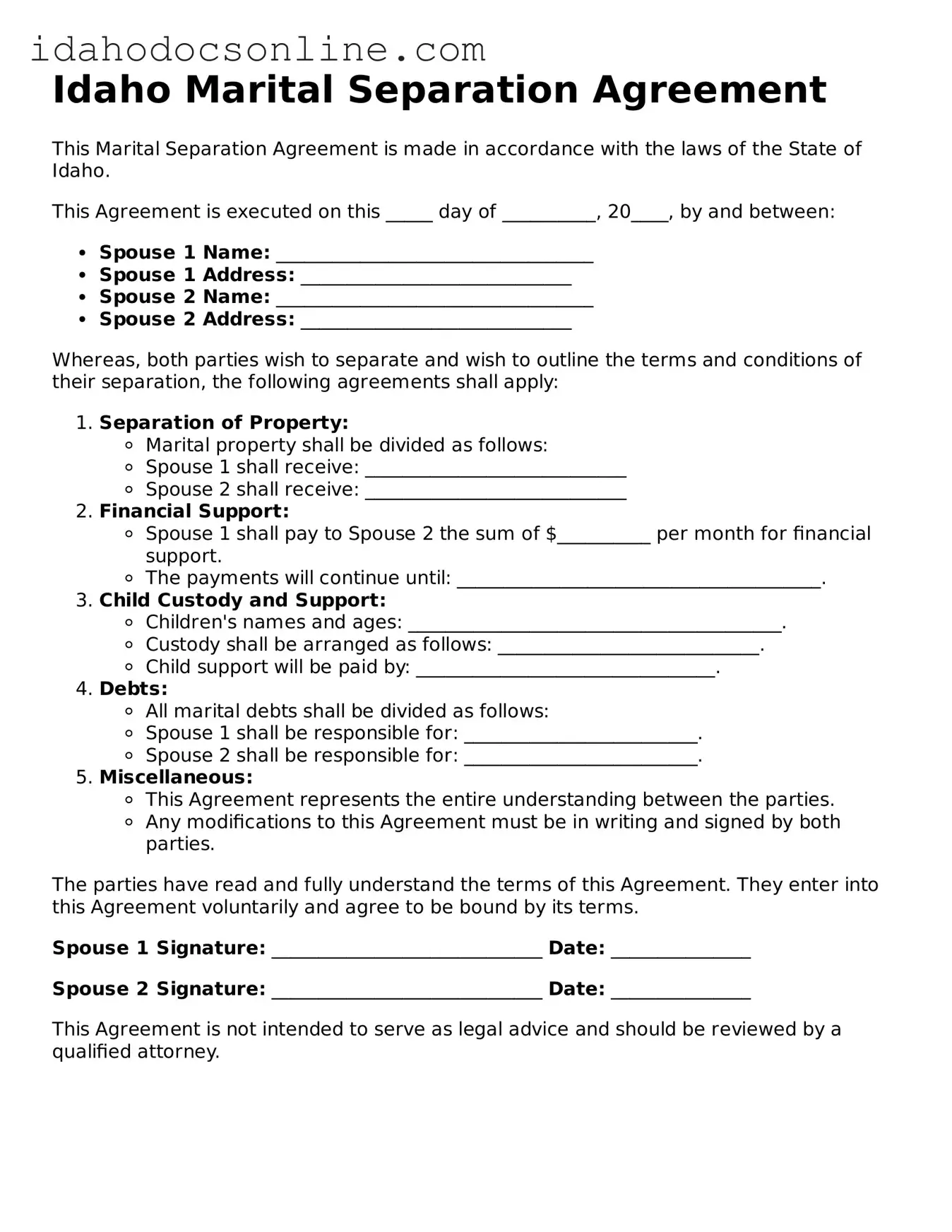Idaho Marital Separation Agreement
This Marital Separation Agreement is made in accordance with the laws of the State of Idaho.
This Agreement is executed on this _____ day of __________, 20____, by and between:
- Spouse 1 Name: __________________________________
- Spouse 1 Address: _____________________________
- Spouse 2 Name: __________________________________
- Spouse 2 Address: _____________________________
Whereas, both parties wish to separate and wish to outline the terms and conditions of their separation, the following agreements shall apply:
- Separation of Property:
- Marital property shall be divided as follows:
- Spouse 1 shall receive: ____________________________
- Spouse 2 shall receive: ____________________________
- Financial Support:
- Spouse 1 shall pay to Spouse 2 the sum of $__________ per month for financial support.
- The payments will continue until: _______________________________________.
- Child Custody and Support:
- Children's names and ages: ________________________________________.
- Custody shall be arranged as follows: ____________________________.
- Child support will be paid by: ________________________________.
- Debts:
- All marital debts shall be divided as follows:
- Spouse 1 shall be responsible for: _________________________.
- Spouse 2 shall be responsible for: _________________________.
- Miscellaneous:
- This Agreement represents the entire understanding between the parties.
- Any modifications to this Agreement must be in writing and signed by both parties.
The parties have read and fully understand the terms of this Agreement. They enter into this Agreement voluntarily and agree to be bound by its terms.
Spouse 1 Signature: _____________________________ Date: _______________
Spouse 2 Signature: _____________________________ Date: _______________
This Agreement is not intended to serve as legal advice and should be reviewed by a qualified attorney.
